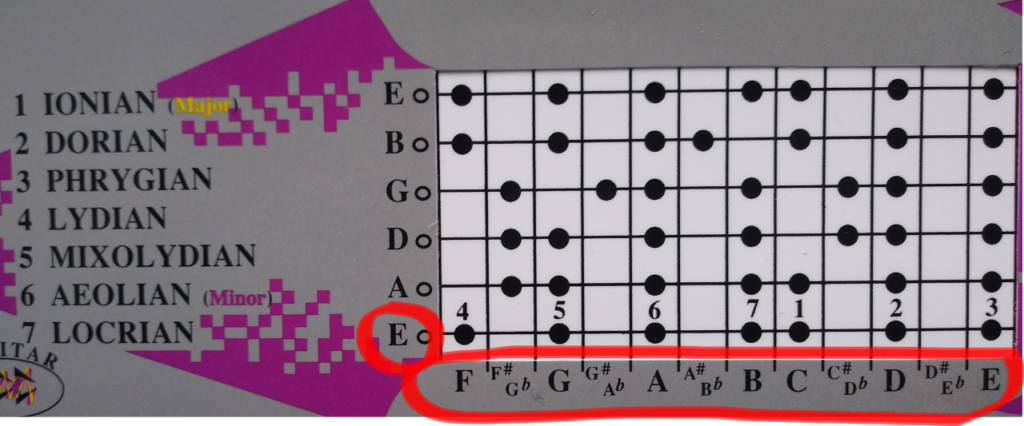Learning chords and scales is what it is all about when learning to play guitar. This multi-part article will focus on scales to get you started on that path to becoming a lead guitar player.
The key to playing lead guitar well is to know the names of all the notes on the guitar neck and understand their relationships.
You must know every single note along the neck down each string. If you’re jamming in the key of E, you need to know all the go-to notes for that key up and down the neck.
The relationship of the notes is important. It just won’t sound good if you play a C major scale when the song requires a C minor scale.
There’s a lot of term to get use to if you’re a beginning so hang in there.
Here’s some important terms to know for beginners:
Scale – derived from a Latin word meaning ladder. It’s like that Latin stuff is everywhere. A scale is a group of notes or tones used to create melodies or harmonies.
The guitar nut suspends the guitar strings on the end of the neck closet to the headstock.
The guitar strings are numbered 1 to 6 from the bottom up or from the high E string to the low E string.
The Standard tuning/naming of each string – High E = string 1; B = sting 2; G = string 3; D = string 4; A = string 5; Low E = string 6
A fret is the space between two fretbars or metal strips on the neck of a guitar. Each fret space is a half step making 2 frets a whole step. Moving down the neck toward the headstock flats(b) the note, while moving up the neck toward the guitar body sharps (#) the note.
There are a total of 12 notes – starting with the open E string, the scale moves up the neck toward the body of the guitar in half steps – E – F – F#/Gb – G – G#/Ab – A – A#/Bb – B – C – C#/Db – D – D#/Eb – E

Note how there is only a half step between E and F and B and C compare to the other note relationships i.e. F to G or G to A or C to D or D to E are 2 half steps or a whole step apart.
Octave –Referencing the open E note on the Low E string – the octave for the open E is 12 frets or half steps up the neck to the next E. This position is called the 12th fret which will usually be double dotted.
Root note – think of a root note as the starting and ending note of a scale. The root note relates to the key your playing in. Playing a scale in the key of A minor will start and end with an A note.
C Major scale includes the notes C D E F G A B – all the notes are natural meaning there are no sharps(#) or flats(b). A key point to remember – the C Major scale is the only major scale with no sharps or flats.
There are many, many practice techniques to help you learn how to play scales. The standard way of teaching scales is to learn box patterns but don’t stop there! You can expand your playing ability by spreading that pattern across all the strings along the entire fretboard (alt. name – fingerboard). This is how you expand your basic plucking skills into the magical world of the master shredder!
Learn all the notes on the Low E String (once you memorized these notes just know you have also memorized all the notes on the high E string – 4 more strings to go!)
1st string(High E): E – F – F# – G – G# – A – A# – B – C – C# – D – D# – E
2nd string: B – C – C# – D – D# – E – F – F# – G – G# – A – A# – B
3rd string: G – G# – A – A# – B – C – C# – D – D# – E – F – F# – G
4th string: D – D# – E – F – F# – G – G# – A – A# – B – C – C# – D
5th string: A – A# – B – C – C# – D – D# – E – F – F# – G – G# – A
6th string (low E): E – F – F# – G – G# – A – A# – B – C – C# – D – D# – E
Check out the next 2 parts of this article focused on some tasty techniques to take your picking to the next level!
Learning Scales On The Guitar 101 – Part 2 of 3 Major and Minor
- A wicked, easy way to Learning 1 major scale and 1 minor scale using only 1 scale pattern!
Learning Scales On The Guitar 101 – Part 3 of 3 Octaves
- Octaves are soooo key to spreading the scale patterns across the neck!
